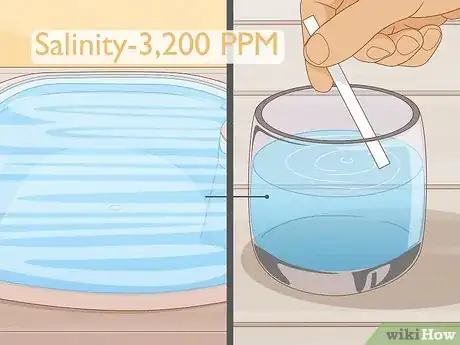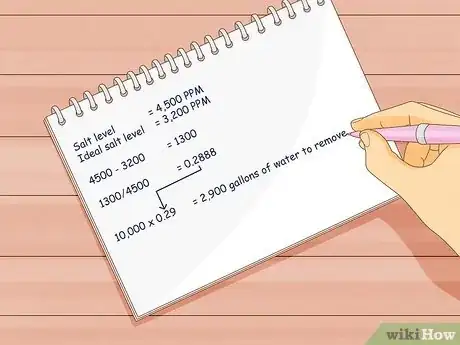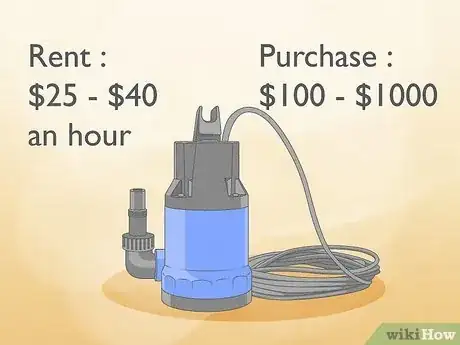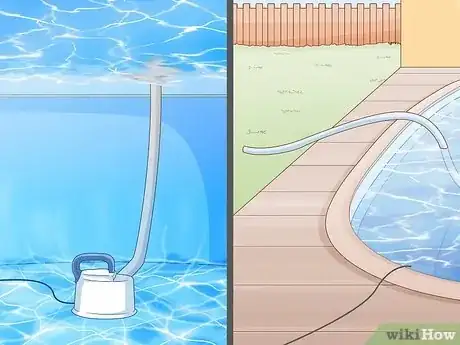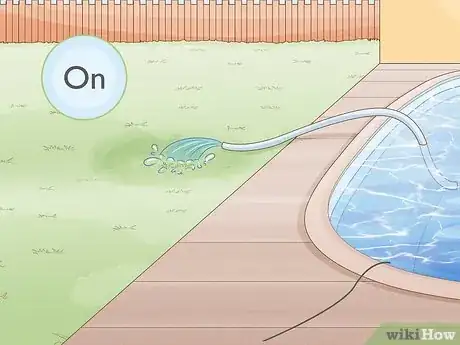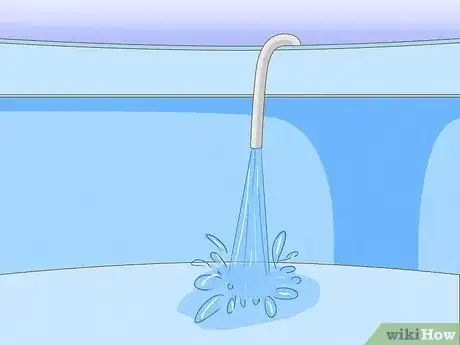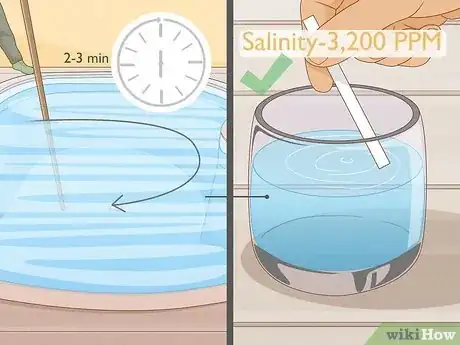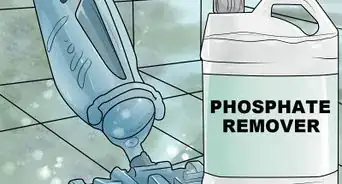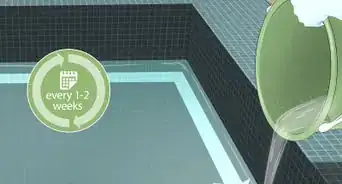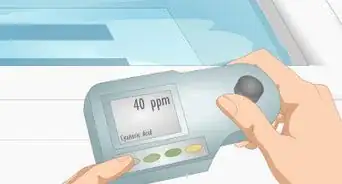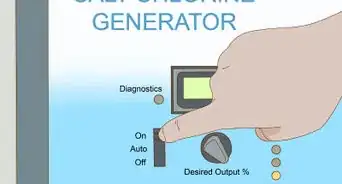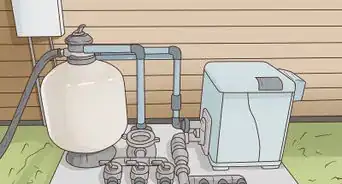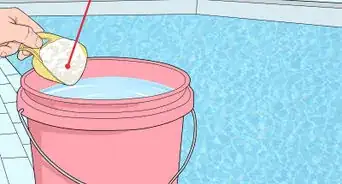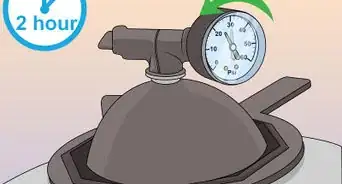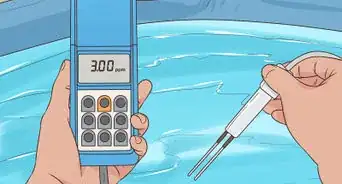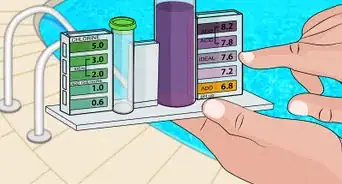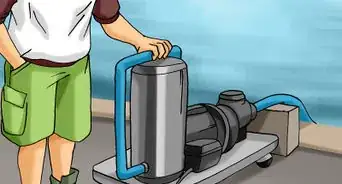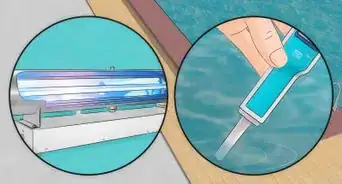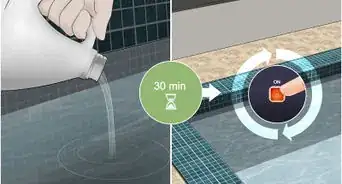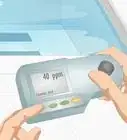This article was co-authored by wikiHow staff writer, Hannah Madden. Hannah Madden is a writer, editor, and artist currently living in Portland, Oregon. In 2018, she graduated from Portland State University with a B.S. in Environmental Studies. Hannah enjoys writing articles about conservation, sustainability, and eco-friendly products. When she isn’t writing, you can find Hannah working on hand embroidery projects and listening to music.
This article has been viewed 39,662 times.
Learn more...
Is your pool water too salty? Maybe you added too much by accident, or an overeager pool attendant got their math wrong. Whatever the case may be, balancing out your salt levels is an important part of pool maintenance. While draining your pool may sound like a hassle, draining and refilling the pool is the only way to lower the salt levels (because salt doesn’t evaporate). In this article, we’ll walk you through lowering the salt levels in a pool so you and your family can swim freely again.
Steps
Calculating How Much Water to Drain
-
1Test your pool’s salinity with a test strip. Pool test strips will quickly tell you how much salt is in your pool (which will help you figure out how much water you need to drain). Scoop about 1 in (2.5 cm) of pool water into a cup, then take a test strip and put it into the water. Wait about 5 minutes, then look at the reading on the strip and compare it to the numbers on the bottle.[1]
- The reading on the strip will give you a number between 1 and 10. These numbers correlate with the numbers on the bottle of test strips that will tell you how much salt is in your pool.
- The recommended range is between 2,700 and 3,400 parts per million (PPM). The optimal salinity for a pool is 3,200 PPM.
- Lowering the salt levels in your pool can sound like a pain, but it’s important to keep them balanced. Too much salt can corrode your pool equipment, and since salt doesn’t evaporate, your salt levels won’t get lower on their own. However, swimming in a pool that’s too salty isn’t dangerous for you or your family.
-
2Find your pool’s overall volume. If you’ve filled your pool to capacity, check the unit’s user manual to find out the maximum amount of water it can hold. If your pool is not completely full, or if you can’t find its maximum volume anywhere, you can calculate how much water it contains using the following formulas:[2]
- For rectangular pools: width x length x depth x 7.48 US gal (28.3 l).
- For circular pools: π x radius² x depth x 7.48 US gal (28.3 l).
- For oval pools: π x ½ width x ½ length x depth x 7.48 US gal (28.3 l).
- For variable depth pools, find the unit’s average depth using the formula shallow end depth x deep end depth ÷ 2. When doing your calculations, use this number in place of depth.
- For irregularly shaped pools, use the previous formulas to find the measurements of each individual section, then add them together to calculate the pool’s volume.
Advertisement -
3Calculate how much water you need to drain using PPM and volume. First, subtract your recommended salt PPM from your current salt PPM. Then, divide that number by the current salt PPM. Finally, multiply that number by the pool’s total volume to tell you how much water you need to drain.[3]
- For example, if your salt level is 4,500 PPM and ideally it should be 3,200 PPM, you would calculate 4500 - 3200 = 1300.
- Take that number and divide it by your current salt PPM to get 1300/4500 = 0.2888.
- Finally, multiply that number by the number of gallons in your pool: 10,000 x 0.29 = 2,900 gallons of water to remove.
Draining and Refilling the Pool
-
1Purchase or rent a pool drainage pump. You can rent a pump for between $25 and $40 an hour or purchase a pump for anywhere between $100 and $1000, depending on the quality. Pumps are available from most pool supply and home improvement stores and typically come in 1 of the following forms:[4]
- Submersible pumps, which sit completely inside the water and are usually more affordable than above-ground pumps.
- Above-ground pumps, which sit next to a pool and are usually faster and more powerful than submersible pumps.
-
2Hook your pump up to the pool. If you’re using a submersible pump, place the pump inside the pool completely underwater. If you’re using an above-ground pump, connect it to the pipes on the outside of your pool. Direct the pool water into your yard or your home’s sewer clean-out. In most cities, you cannot discharge pool water into a public area, so be sure to direct it back onto your property.
- Your sewer clean-out is a small, circular hole covered by a miniature manhole cover. Look for it in the area immediately surrounding your house.
- Not sure where to drain your water? Check your local county or city’s website.
-
3Track the amount of water going out as you drain your pool. Most pumps drain at a rate of 12 gallons per minute, but you can check your owner’s manual to be sure. Track how much water you’ve drained by dividing your drain rate by the amount of water you need to drain.
- For instance, if you need to drain 2,900 gallons, you would divide 2,900 / 12 = 241 minutes or 4 hours.
-
4Fill your pool with fresh water. Connect a rubber hose to an indoor or outdoor faucet and run it to your pool. Then, turn the faucet on and let the pool fill up with fresh, unsalted tap water equal to the amount of water you removed earlier.[5]
-
5Check your pool’s current salt level. After filling your pool with water, mix a small section of it with a pool brush or pole for 2 to 3 minutes. Then, test that area of the water to get a preliminary salt reading. If it is still above the pool’s recommended PPM, you may need to dilute the water further. If it is below the recommended PPM, you’ll need to add more salt to the pool.[6]
Things You’ll Need
- Test strip
- Pool drainage pump
- Rubber hose
- Pool brush or pole
- Pool salt (if necessary)
References
- ↑ https://www.youtube.com/watch?v=zG0ogZA5g8s&t=31s
- ↑ https://www.akronohio.gov/cms/resource_library/files/3d08454d34bf59ab/calculateswimmingpool_2015.pdf
- ↑ https://www.discountsaltpool.com/assets/doc/Simple-Cell-Owners-manual.pdf
- ↑ https://cdn5-hosted.civiclive.com/UserFiles/Servers/Server_15209001/Image/Live/Code_Compliance/RESOURCES/drainpoolslegally.pdf
- ↑ https://www.mesaaz.gov/residents/environmental/drain-or-backwash-your-pool
- ↑ https://www.discountsaltpool.com/assets/doc/Simple-Cell-Owners-manual.pdf
About This Article
Before altering your pool’s salt levels, check whether they’re actually too high by comparing the water’s PPM to the manufacturer’s recommended PPM. If there is too much salt present, find your pool’s overall volume and use it to determine how much water you need to remove. Then, drain the water using a pool pump and replace it with fresh, unsalted tap water. Make sure to mix the solution thoroughly using a pool brush, then let the water sit for 24 hours. For tips on how to find your pool’s salt levels and overall volume, read on!
